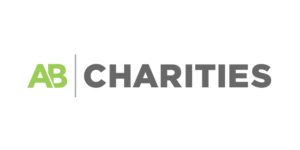
[PODCAST] The Importance of In-Kind Donations
November 28, 2022
[PODCAST] Embracing Entrepreneurship and Young Nonprofit Leaders
December 2, 2022Common Proposal Writing Mistakes
Common Proposal Writing Mistakes You Can Fix Today!
Writing grant proposals can be a daunting task for both novice and experienced writers. There is an art to proposal writing, and understanding the terms and technical aspects of an application is not always an easy task. The good news is that time and practice can help you improve your skills.
Oscar Wilde is quoted as saying, “Experience is simply the name we give our mistakes.” All grantwriters evolve and grow in their craft, and learning from your mistakes (and the mistakes of others) can help you improve. Given this framework, below are eight common mistakes and their “fixes” to help you increase your chances of getting your applications funded.
Mistake #1: Assuming the funder knows what your organization does and the impact you have on the community
Most grant applications include an organizational background or capacity section. Regardless of the terminology used by the funder, the purpose of this section is to establish your organization’s credibility. This section should have information on your organization’s history, mission, overall structure, initiatives and programs, and accomplishments. You don’t want to be too philosophical or overload the section with history, but you do want to convey the critical milestones of your organization.
Outline all the services you provide, highlighting the strengths of the particular initiative you are seeking funding for. Share your accomplishments and your impact on the target population and/or the community. This is your time to shine and ensure the funder that your organization can get the job done.
The mistake many writers make is not putting enough information in this section to adequately tell the story of their organization. This section should build confidence in your ability to perform the work you are proposing. Don’t overlook this important opportunity to demonstrate to the funder that you are an organization worth supporting!
Mistake #2: Writing the need section discussing your organizational needs and not the needs of your target population
The need section of an application should clearly define the needs of the target population. This section describes the current condition or status of the population to be served. The need should be documented with credible sources, relevant to the project requesting funding, and local in nature. You want to use up-to-date numbers and statistics to paint the picture. This baseline data of the “here and now” will help when you explain your intended impact or what you want to see changed.
The common mistake in this section is for organizations to discuss their own needs (i.e., “We need a staff person to provide services.” or “We need new technology for outreach initiatives.”) instead of explaining the needs of the people to be served. Quite simply, your organization is not part of the problem; instead, it exists to provide a solution to a need. This section should cover the needs your program addresses.
Mistake #3: Not doing a root cause analysis of the need
It is also important to discuss the reasons behind the need or the root causes of the target population’s condition or status. If you don’t do this analysis, you won’t know if the approach you are proposing is going to address their need. For example, if the need you are addressing is high unemployment, you should do an analysis of why unemployment is high. Is it because there are not enough jobs, no transportation to jobs, no training to increase employability, or no childcare for those who could be employed? If the root cause of high unemployment is that there are no jobs, proposing childcare is not going to address the high unemployment rate.
Most often, there will be several reasons behind the need, so you will want to clearly identify the one(s) you will be addressing through your project or program. This analysis can also help you identify other organizations addressing the same need and partner with them to have a greater impact on the problem.
Mistake #4: Not identifying the changes your programs will have on the target population
There has been a shift in the way funders and donors think about “outcomes.” Traditionally, the impact of nonprofit organizations has been measured by the direct products of program activities, which are measured in terms of the volume of work accomplished (for example, the number of hours of services, number of participants, etc.). These “outputs” focus on the activities conducted by the organization and are intended to lead to client change, but inherently, they do not measure client change.
Outcomes, on the other hand, measure the changes in clients. They provide more accountability regarding the impact of your services on the population you serve. The key to writing good goals and objectives (also referred to as outcomes and indicators by some) is to use the following practices:
Goals/Outcomes
- Write them from a client change perspective: Start the goal with “Participants will …” This will help you develop the goals/outcomes with the participants’ changes in mind.
- Break them down into short-, mid-, and long-term time frames:
- Short-term goals/outcomes are the first benefits or changes participants experience and are often a change in knowledge, skills, and attitudes.
- Mid-term goals/outcomes are often a change in behavior that results from knowledge, skills, and attitudes.
- Long-term goals/outcomes are the ultimate changes expected in participants and are usually changes in the condition or status of individuals.
Objectives/Indicators
Funders usually ask you to break the goals/outcomes down into smaller parts that provide specific, measurable actions by which the goals/outcomes can be accomplished. These are called objectives (or indicators) and need to be SMART—which means specific, measurable, achievable, relevant, and time framed.
- Specific answers, “What exactly are we going to do for whom?”
- Measurable answers, “Is it quantifiable (you will need to have a target number) and can we measure it?”
- Achievable answers, “Can we get it done in the proposed time frame with the resources and support we have available?”
- Relevant answers, “Will this objective have an effect on the desired goal/outcome?”
- Time Framed answers, “When will this objective/indicator be accomplished?”
Mistake #5: Not “spending your money” in the approach section
It can be really helpful to think of your approach section as an explanation of how you will spend the money in your budget request. This means that everything requested in the budget should clearly be explained through the activities in the approach. For example, if an application requests new computer equipment to increase student achievement, the ways the new equipment will be used should be outlined in the approach. There should be nothing new to the funder when he/she gets to the budget—it should be transparent from the approach.
The approach discusses the who, what, where, and when of the project. It is essential to provide enough detail to create a clear picture for the funder. This section of the application serves as the work plan for the project if it is funded, so it is essential that it is written with a clear explanation of who will do what work. The abilities of the staff should also be discussed.
Mistake #6: Mistakes in calculating your budget request
Changes get made a lot during the planning of a proposal. One common mistake is not updating the budget numbers to reflect those changes. It is a good idea to have an Excel spreadsheet or other application that automatically calculates changes in your budget numbers to ensure the numbers add up.
Mistake #7: Not following the funder’s instructions
Most of the time, funders give you explicit directions to follow when preparing and submitting your proposals. Directions may include information like due dates and times, page limits, required attachments, the order of the application’s sections, margin sizes, or even the font you can use in your narrative.
Because funders have more applications and causes than they can fund, not following directions lessens your application’s creditability. Many funders assume that if you can’t follow directions when you are asking for the money, you won’t follow directions when it comes to submitting reports and following through with the implementation of your proposal. Don’t let this happen to you.
Mistake #8: Not leaving enough time for review
Grantwriters are constantly working against deadlines and sometimes, in this rush, make simple mistakes that diminish the impact of the application. Whenever possible, leave time in the schedule for a second and third review once everything is complete. It is often in the second or third review that you discover connections that need to be made to tighten your proposal. These reviews maximize your proposal’s strengths and eliminate weaknesses.
Reviews by internal and external stakeholders will help you make sure simple mistakes in spelling and grammar are caught and that all the sections of the proposal fit and flow together. This common mistake can be corrected if you design the schedule to allow for some extra time. While not easy, it can be done.
In summary, you will find that your comfort with writing proposals increases over time. Learning from your mistakes and mistakes your colleagues make can help you hone your skills. Read successful proposals to dissect what made them successful. Or, become a grant reviewer to understand what funders are looking for in their applications. Both of these “free” training opportunities will help you increase your skills and increase your success rate.
The post Common Proposal Writing Mistakes appeared first on Nonprofit Hub.
